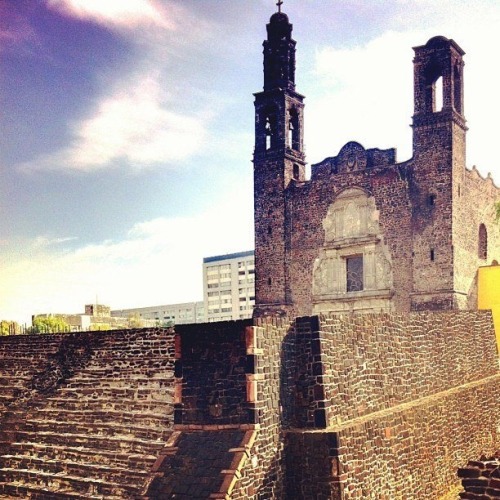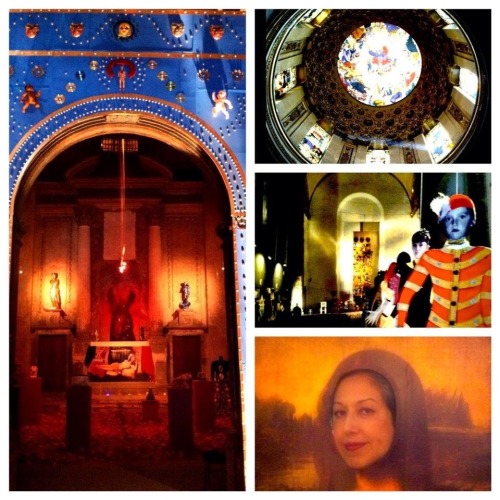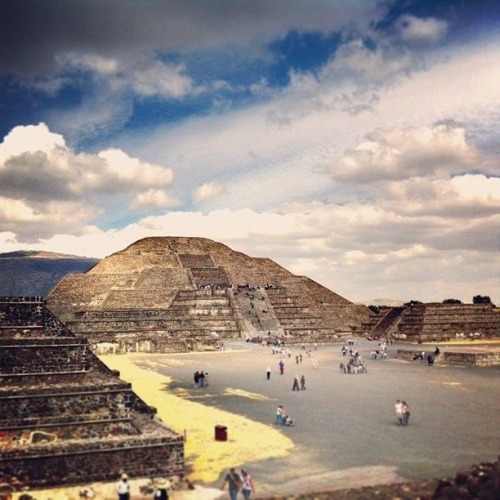Prior to my first visit to Mexico City (or D.F., Distrito Federal) some fifteen years ago, my travel
Prior to my first visit to Mexico City (or D.F., Distrito Federal) some fifteen years ago, my travel experiences with Mexico were limited to a few coastal resort towns and some best-forgotten college raids on Ensenada and Tijuana. Having been born and raised in Los Angeles, I was acquainted with Mexican culture but did not (and sadly, still don’t) speak Spanish fluently. Nevertheless, the first time I stepped off the plane in Mexico City many years ago, I felt as if an ancient string deep in my chest had been plucked and it continued to reverberate throughout my entire time in the city. Mexico City is so old that it makes other major North American cities (with the possible exception of New Orleans, with which it shares many similarities) seem like toddlers by comparison. By most accounts, it was founded in 1325 as the Aztec capital city of Tenochtitlan and the history of this teeming metropolis is steeped in so much blood, symbolism, death and art that it is no wonder Andre Breton described Mexico as the “most surrealist country in the world.” Art abounds and informs daily life, anarchy is barely contained by the hapless governmental forces and it seems that the story of this nation is an ongoing story of revolution. Here, each new culture has literally built on top of its predecessors; ultra-modern buildings vie for a piece of the famously polluted airspace with 16th century cathedrals and 17th century palaces. Underneath it all lie the ancient carved stones of Tenochtitlan, the great capital city of the Mexica Empire, who themselves built temple upon temple to worship, describe and make sacrifices to their divine cosmogony. It seems as if no significant repairs to the city’s underground infrastructure can be undertaken without uncovering a new jaw-dropping, monolithic representation of a bloodthirsty God or Goddess, all of which eventually find their way into one of the world’s finest archeological museums, Mexico City’s Museo Nacional de Antropología. Death, sex and religion are omnipresent themes. Perhaps this is due to the culture’s roots as an agricultural/warrior civilization (ignorant speculation on my part) but socio-anthropologists would know better. It is nearly impossible to cross an intersection without encountering a newspaper kiosk displaying periodicals featuring the ample pompis of a nearly naked female alongside a newspaper with a gruesome death photo. Duality runs deep in the Mexican culture: life and death, heaven and hell, rich and poor, Frida and Diego; these things must exist together for the cosmos to retain its delicate balance, for the world to make sense. My most recent trip to Mexico City took place over the 2013 New Year’s celebration. The holidays are a wonderful time to visit because the weather is typically ideal in winter and the city is festooned with lights. I work in the luxury travel industry and I very much enjoy staying in hotels like the impeccable St. Regis or the gracious Four Seasons when circumstances permit, but for me, Mexico City is best experienced like a local: walking as much as possible, eating in the local restaurants, riding the Metro - the latter of which I would not recommend for every traveler. The Metro was designed to provide inexpensive and convenient mass transportation to the far-flung neighborhoods of D.F., a task at which it succeeds wonderfully, but it can be a claustrophobic and anxiety producing experience for anyone not accustomed to riding an overcrowded subway train at rush hour. It’s an unforgettable slice of the daily life of working class Mexico City. Like the aforementioned city of New Orleans, Mexico City is a culinary dream destination: regional Mexican herbs and spices and ancestral cooking techniques combine to produce both traditional and modern cuisine that is considered one of the nation’s true treasures. New restaurants of the moment are constantly popping up in trendy Colonias like Polanco, Condesa and up-and-coming Roma; historic gems like El Moro, famous for producing the city’s best churros (and these are nothing like the state fair variety) are still around and of course, it goes without saying that the street taco ‘trend’ which was born here, migrated to Los Angeles and then to the rest of the U.S. is absolutely unparalleled. D.F. is a bewilderingly complicated knot of roads, traffic and construction that only the most seasoned and daring of travelers would dare attempt to navigate on their own in a rented vehicle. Far more convenient and safer is the hiring of a car and driver, although taxis are prevalent and useful for short trips within the city. Day trips from the city should include the ancient city of Teotihuacan (150 B.C.) and the pre-hispanic floating gardens of Xochimilco. We were fortunate enough to visit Xochimilco on a cloudy weekday with the threat of rain in the air, so the normally crowded waterways were practically empty and we were able to enjoy this unique experience in relative solitude with a three hour trajinera ride to the isolated and supposedly haunted Isla de Las Muñecas. Like New York is to the United States, Mexico City is an incubator of artistic expression. Some of the greatest political/historic murals of Diego Rivera decorate the walls of the Palacio Nacional, architecture is regarded as something to be preserved, a former 17th century Catholic church and convent in the city’s Centro Historico houses a modern art museum and event space. Public 'street’ art often addresses political imbalances and class inequalities. Mexico is a volatile and politically unstable country where the divide between rich and poor is glaring and enormous. Outside (read U.S.) economic and political influence is a perennial hot topic and Mexico’s bigger, richer and more powerful neighbor to the north is not always perceived as a benefactor. Here, the poor (and there are many, many poor) are desperately poor - another reason why Mexico City has been overlooked as a major leisure travel destination, because frankly, it is difficult to enjoy one’s vacation when confronted with the sight of begging children and their mothers. My wife dug deep into her pockets for spare coins each time she came across a mother or a child - how could she refuse? One of my most indelible memories from this trip occurred outside a cupcake shop, where a very homeless man was staring through the windows of the locked shop at the baked goodies displayed in the cases. We had just left a panaderia (bakery) down the street and my wife walked up to the hungry man, told him the cupcake shop was closed and then offered him one of her own still-warm baked muffins. The man stared at her for a moment in disbelief, then his face was transformed by one of the most grateful smiles I’ve ever witnessed. Again, not a move I would suggest for the inexperienced traveler, but my wife is very capable of sizing up a potentially dangerous situation and handling herself. I suppose the last anecdote illustrates the true value of travel for me. Mexico City puts me back in touch with the things I value most about humanity: culture, history, food, the arts, social consciousness, a sense of perspective - Mexico City has it all. I can’t wait to go back. -- source link
Tumblr Blog : ohmytvconefive.tumblr.com
#mexico city#travel#iphoneography#photography#mexico









